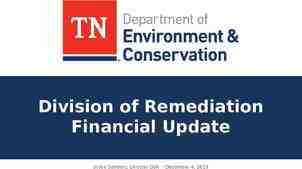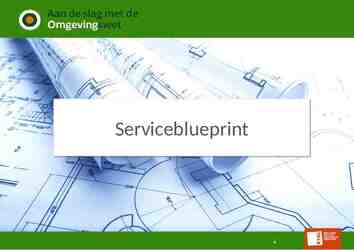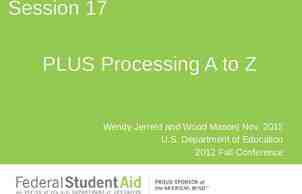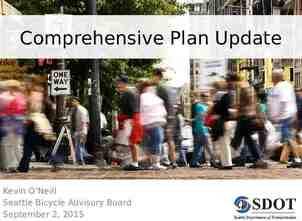Intentional Connections: Providing Low Level Students with Pathways
39 Slides1.66 MB

Intentional Connections: Providing Low Level Students with Pathways to Success

State Mandates New TSIA began Fall 2013 Students Score College Ready Developmental Education with Diagnostics Adult Basic Education (ABE) with Diagnostics Adult Basic Education (ABE) Score of 5 or 6 Developmental Education Score of 4 Institutional Decision, Financial Available (BASE) Score of 3 Institutional Decision, No Financial Aide Available (BASE) Score of 1 or 2 referred to ABE programs

Developmental Education Developmental Education is a field of practice and research within higher education with a theoretical foundation in developmental psychology and adult learning theory. (NADE & NCDE). Provides for cognitive and affective growth of all postsecondary learners, at all levels of the learning continuum. It is more than a 16 week course of content. Learning support Tutoring, group tutoring Counseling Development of learning strategies Reducing affective barriers to learning

Let’s talk about Intentional Connections e s o h W Lens Are You ? g n i s U

The Reality of the ABE Student I’m Margot Brown and I’m going to start college this Fall. I’m a single mother trying to make my life better for me & my kids.

A glimpse into Margot’s world 26 years old, trying to get into the nursing program I tested at the ABE level classes Living in poverty, with 2 part time jobs Single mom supporting two young children Abusive ex-boyfriend Often go hungry so family can eat Car is old and breaks down all the time Had fire in apartment 4 years ago, lost many things Went to juvenile detention as a teen for shoplifting Abused by father & uncles Family history of mental illness

My Reality! Factors that may contribute to me leaving school: College was not what I thought it would be. I never was good at school so why would I expect to be now? I have no idea what courses to take. Everyone at home thinks this is a “stupid” idea. Ways to help change this: Relevant materials (contextualized) Small success steps Visualizing the end goal Opportunity for counseling, personal attention, flexible scheduling *Kerka, S. 1995

Our Truth at SJC Lowest level developmental students historically stand little chances of completing a credential or being retained Lowest level reading/writing (9 Contact Hours) Only stand alones, INRW 0301 and 0302 for other students ABE Level 3 and 4, as determined by TSIA, yet have a high school credential Students need intentional guides to successful completion Help in establishing GRIT

Who Are the Students We Serve Students with disabilities including learning disabled, physical disabilities, and visual impairments Single parents with children Recent high school graduates Non-traditional older students returning to school Second language learners

Examples of Life Issues Students Face Abuse Money Lack of student skills Pregnancy Financial Aid Abortion Parents Poor Preparation Murder Self esteem Disabilities Suicide Divorce ESL Drugs Depression Eviction Incarceration Psychological problems 10

First Year of Testing MATH READ WRITING ABE 2,901 2,232 2,212 DEVELOPMENT AL EDUCATION 2,479 1,711 2,407 COLLEGE READY 1,795 3,153 1,318

ABE Levels ABE Levels MATH READ WRITING 6 3 525 863 5 850 1,019 433 4 704 295 615 3 164 39 169 2 29 52 43 1 2 15 37

Theoretical Structure of IC Provide intensive mentoring and support in a learning community (LC) LC improve students learning experience Improved learning outcomes Quicker pathway through English requirements(MDRC) Provide deliberate pathways for students Connect students to college program and workforce Instruction in needed basic skills Guide students in developing definite educational and career plans Assist students in realizing they do belong in

Program First semester students placed in Learning Community consisting of 3 classes: Student Success Class: 3 credit hrs. with faculty advisor Read 0308: 3 credit hrs./2hrs. weekly lab English 0306: 3 credit hrs. /1hr. weekly lab Recommended: Math not taken until second semester Student Success or Reading Instructor serves as case manager

Program Students complete career assessments (Focus 2) to determine career interests Case Manager schedules meetings with program directors or chairs in their chosen career areas Provide students opportunity to visit class in area of career choice Opportunity to try out the classes Decide they if wish to pursue career in that area

Options for Students For those entering not college ready, how can we improve their retention and completion rates? STEP 1: Know Your Students STEP 2: Conduct Institutional Needs Analysis – Identify all programs and services for students Academic fields of study (FOS) CTE programs of study (POS) (level 1, 2 certificates) CE technical certificates (articulated) Accelerate TX and Career Pathways Adult Education and Literacy (including ESL and GED) Community programs and services Identify gaps in programs/services for YOUR students

Options for Students STEP 3: Understand Funding Options Continued Federal financial aid (e.g., Pell) State formula funding Grants (e.g., ATX, AEL, TPEG) Needs‐based funding (e.g., Pell, Trio, DARS, SNAP, TANF) STEP 4: Strengthen Advising Identify and train advising specialists for underprepared students Ensure specialists understand all options and funding opportunities/limitations Build intake protocols that identify student career goals EARLY, informed by regional labor market and wage information Provide recommendations based on student goals and life circumstances Ensure short term completions (i.e., Level 1 Cert.) are stackable to more robust credentials

Options for Students Continued STEP 5: Rethink interventions for underprepared students Contextualize basic skills support Focus on students’ knowledge and skill gaps Reduce exit points to one stand‐alone intervention; everything after that is co‐requisite (mainstreamed) Intensify: more weekly contact hours for shorter time periods Continuing and Career/Technical Education Level 1 Certificate students can be tested for diagnostic purposes to identify and provide co‐enrollment interventions to address gaps May require additional support for students not passing

Enrollment Fall 2011 - Fall 2015 Success (A-C) TERM Enrolled Number % Fall 2011 20 15 75% Fall 2012 11 6 55% Fall 2013 88 68 78% Spring 2014 222 157 71% Fall 2014 405 299 74% Spring 2015 213 144 68% Fall 2015 585 433 74%

Directions: Problem Solving Activity Assume the role of one of the students described on the next slide. Then complete the Problem Solving Tool. (Please refer to the handout.) Be prepared to share your solution with the group.

Scenarios Student number 1: John Smith is a 19 year old student who lives at home and with his mother and 3 younger school age siblings. John works 35 hours a week to help his mother support the family. His mother is a single parent and receives no child support. John drives a 2000 Honda Civic that frequently breaks down.

Scenarios Continued Student number 2: Jane Doe is a 31 year old mother of three young children who has recently decided to return to school. Her husband works at a chemical plant. All three children attend the neighborhood school. Jane works part time as well. Her car is ten years old.

Scenarios Continued Student number 3: Renee Reynolds is a 23 year old single parent with two children , one of who has a chronic disease which may require periodical hospitalization. Renee works 40 hours a week and depends on an elderly grandmother for child care. She drive a 17 year old car and lives near a bus line.

The Need to Change Student Thinking and Mindset Many student fail to think of alternatives Giving up is often the choice Our focus is to teach students to problem solve Look at multiple solutions Choose the alternative that best fits their situation Goal is to develop a solution that will enable success

Need to Build a Culture of Success Many students know nothing but failure and disappointment Others lack experiences because of lack of opportunity Poor self-esteem also a major factor e.g. “I have always been a failure in life.” Need to change student thinking from a “fixed mindset” to a “growth mindset.” (Dweck) Develop “grit” needed to overcome adversity

Develop Grit (Duckworth) https://www.ted.com/talks/angela lee duckworth the key to success grit?languag e en

How to Help Students Build a Culture of Success Hold students accountable for their actions and decisions Emphasize solving problems instead of “admiring the problem” Make opportunities available to students when possible they might not have had in the past

Example of Opportunities: Career Fair Provides students with information needed to make more informed decisions about possible career pathways Connects students to the programs and departments

Example of Opportunities: Informal Gatherings North Campus – First Contact Meeting

Example of Opportunities: Field Trips Students visit MD Anderson in Houston, TX

Example of Opportunities: Student Conference on Soft Skills Afforded students opportunity to experience a professional conference Included key note speaker as well as break out sessions Featured a fair with local employers and college departments

Example of Opportunities Business Etiquette Luncheon

Example of Opportunities: Speed Networking Event

Example of Opportunities: Mock Interviews

Opportunity Center: iConnect ESL/ ESOL General Students CPD Student Ambassadors Degree Checks Student Success Center Student Services Student Life Enrollment Services CPD Business Office Financial Aid Testing Center 1st Yr Experience Veteran’s Center

Developing Your Own Program Use the program planning sheet found in your handout packet to develop your own program or make adaptations to an existing one. Be prepared to share your ideas with others.

Bottom Line * FUNDING SOURCES SHOULD NOT LIMIT STUDENTS’ OPTIONS * EXPECTATION: Institutions should consider all options when serving students to and through successful certificate and degree completions CHALLENGE: Your challenge is to bring everyone to the table to FIGURE OUT HOW to make this happen. You are not alone; learn from other colleges. Be proactive. BENEFITS: MEASUREABLY IMPROVED OUTCOMES IN STUDENTS’ PERSISTENCE AND COMPLETIONS

Questions and Answers

Further information: Program Coordinators: Amy Axtell (Central Campus) Myrna Valdez (North Campus) [email protected] Robert Sandhaas (South Campus) [email protected] Thank You! [email protected]






